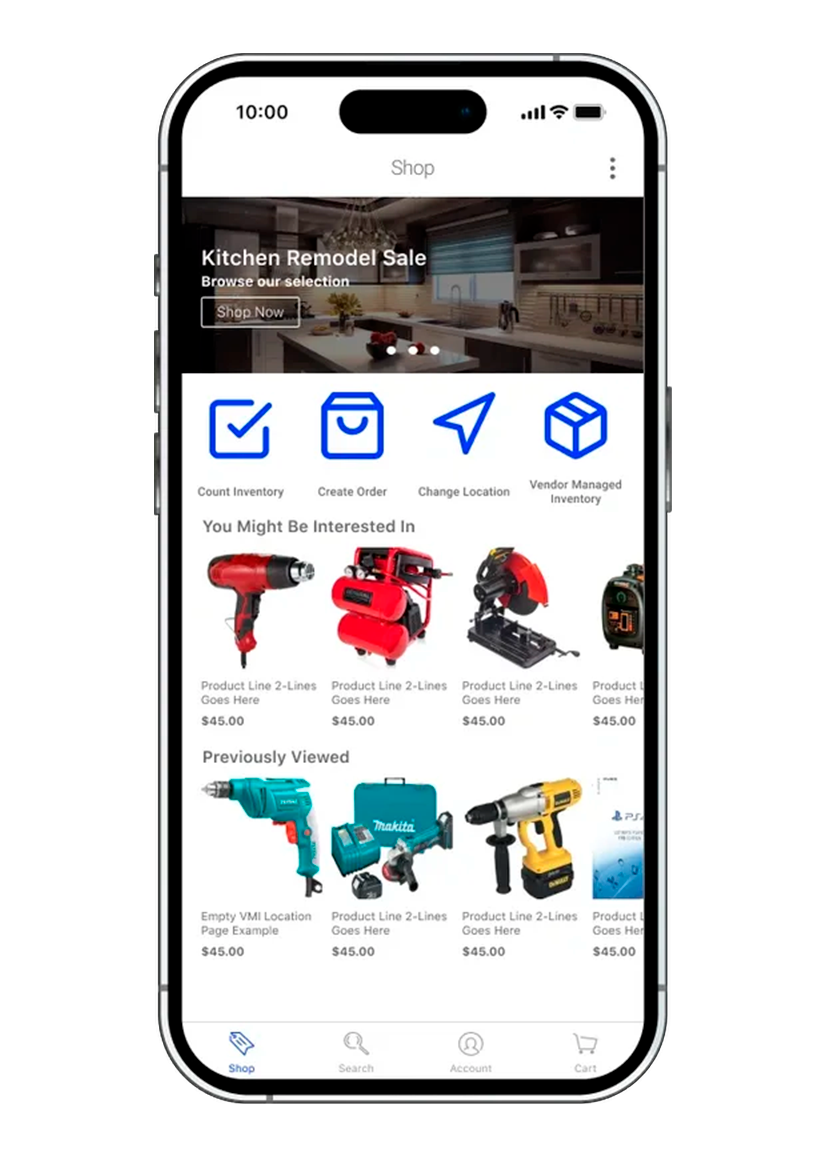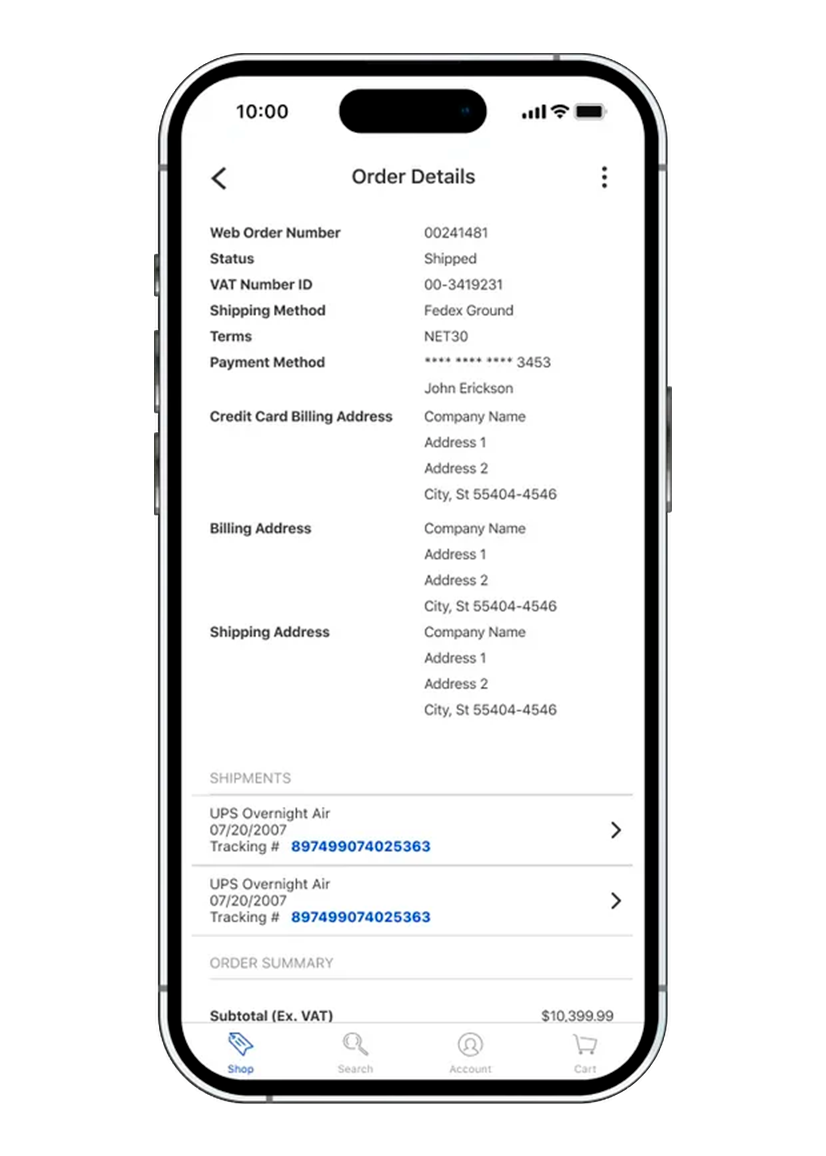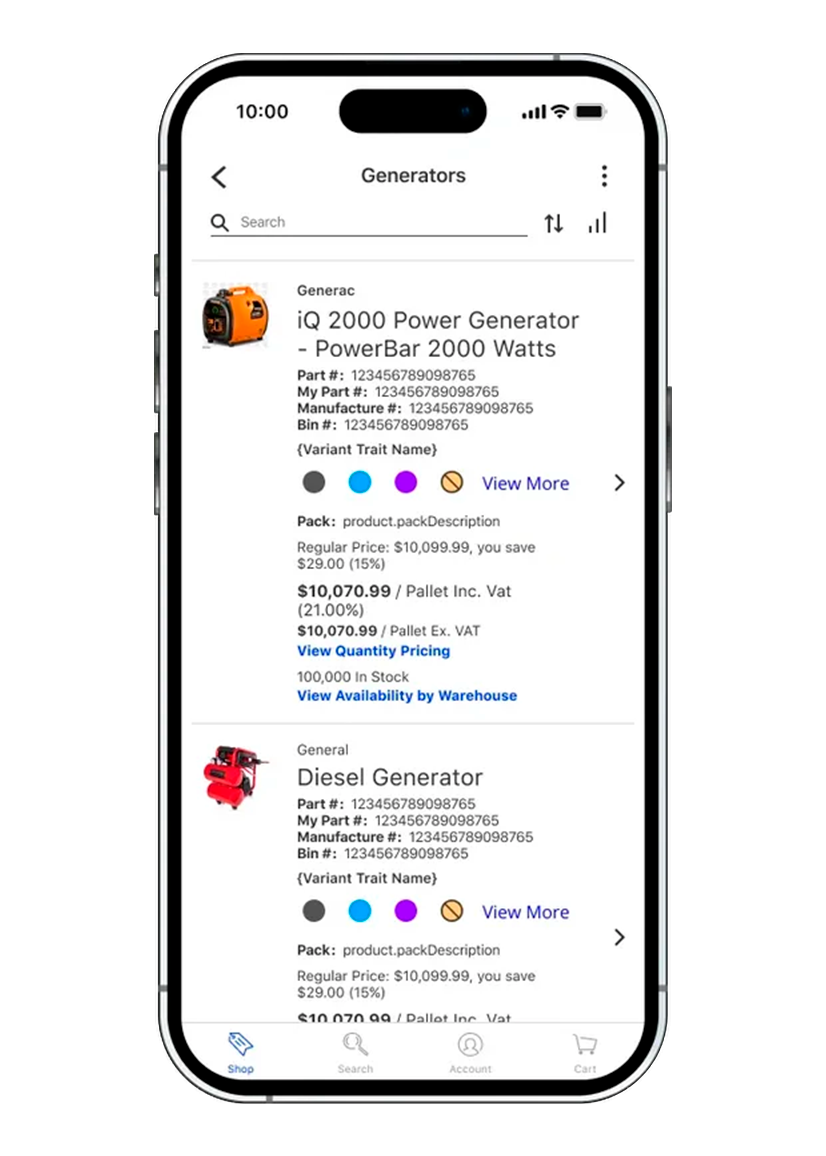B2B eCommerce
Native Mobile App
iOS and Android
Insite Commerce

iOS and Android

This case study aims to explore the design of a customizable, white-label native mobile app tailored specifically to mid-market manufacturing and distribution companies. It addresses their challenges by providing an affordable, easy-to-use, and scalable solution that can be integrated seamlessly with existing eCommerce platform.
The main concerns were the challenges of developing and launching a native app, particularly the time and resources involved. This feedback highlighted the need for our team to effectively manage app store listings and ensure the app seamlessly extends the web experience.
It takes an insane amount of resources to manage mobile-app.
Designing, developing, customizing workflows, managing app-store assets; it gets spendy. Something mid-market companies don't have the resources to do.
Mid-market manufacturers and distributors still need to compete with large-sized businesses, in which most of them have the funds for their own native app.
This makes it difficult for mid-market companies to stay competitive with their larger sized rivals.
Sometimes there's no internet signal where sales reps are visiting (out in the sticks, or in an underground warehouse, or both!), which makes submitting data through the website a problem.
Finding reliable wifi or cell phone service causes huge headaches to their everyday workflows



This project taught me the importance of understanding user needs when building digital solutions. Working with personas like Megan and Carolina highlighted the need for a flexible app that meets diverse business requirements, and the usability study showed the value of incorporating familiar B2C features into a B2B context.
I also learned the importance of balancing customization with manageability, ensuring the app is both user-friendly and easy to maintain. This experience has sharpened my skills and deepened my appreciation for how technology, business operations, and user experience must work together to create effective solutions.